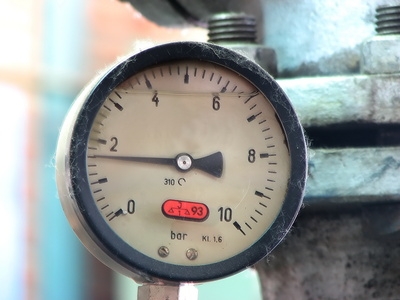
Chevrolet introduced the Cavalier in 1982. The 2001 Chevrolet Cavalier was produced with the option of a 2.2-liter in-line 4-cylinder engine, or a 2.4-liter in-line 4-cylinder engine. The 2001 Cavalier has an electronic fuel injected fuel system with a fuel pump that feeds the fuel lines into the fuel rail. The fuel rail then feeds the four fuel injectors on the top rear of the engine. Over time fuel pumps can go bad, and there are tests you can perform to eliminate or diagnose if your fuel pump is indeed faulty.
Open the hood of the Cavalier, and locate the fuel rail on the top rear portion of the engine. The fuel rail is the metal tube that connects to all four fuel injectors. Remove the cap from the protruding nipple on the top of the fuel rail. This protrusion is called the fuel pressure tester port, and is used to help diagnose fuel delivery problems. Install a fuel pressure tester hose onto the tester port and snug the tester onto the port.
Ask an assistant or second person to turn the engine on. If the engine will not run, ask your assistant to turn the engine over as if trying to start it, but for no longer than three seconds at a time. Read the fuel pressure tester dial during the engine run cycle, or the engine turning over. The dial should indicate a reading between 44 to 54 p.s.i., or pounds per square inch. If the dial does not indicate this level when the engine is running, or sporadically during engine turn over, then there is a fuel deliver problem.
Ask your assistant to turn the engine off or stop turning the engine over. Remove fuel pressure tester, and replace the testing port cap immediately. Position your body near the fuel filler door on the Cavalier and open the door. Remove the gas cap. You are going to place your ear next to the fuel filler hole for the next two testing procedures.
Ask your assistant to turn the key to "Accessories" and then back off, and repeat this four times in a row. When the key is turned to "Accessories" you should hear a small motorized noise coming up the fuel filler tube to your ear. If you do not hear this noise, then you may have a malfunctioning fuel pump. Proceed to the next audible testing procedure in Step 5.
Ask your assistant to turn the engine on completely or just turn the engine over if it wont start. Listen carefully as the engine is turning over, or running for a "gurgling" or "tinkling" sound from the fuel system. The "gurgling" noise is the fuel pump engaging with the liquid fuel. The "tinkling" noise is the fuel return putting fuel back in the tank. The main noise you want to hear is the gurgling sound, as this means the fuel pump is engaging. If you do not hear any noise, then your fuel pump is malfunctioning.